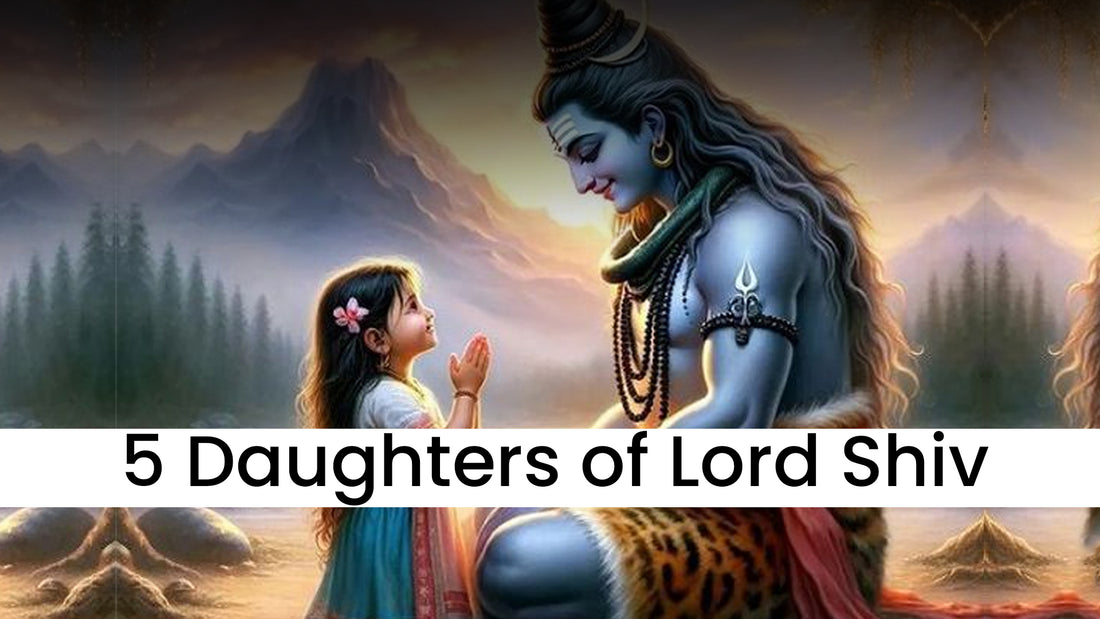Lord Shiva is a very important god in Hinduism. People believe he has special powers related to the universe and spirituality. He is seen as someone who gets rid of bad things, transforms situations, and is good at meditation and living a simple life without many things.
People also think Lord Shiva is kind and helpful to those who believe in him. They believe he gives blessings and guidance to those who pray to him.
In Hindu homes and temples, people often keep brass Shiv murti. These statues are carefully crafted with lots of details to show respect. People use them as a focus for praying, meditating, and thinking about spiritual things. These statues help remind people of Lord Shiva's special qualities, and they also show the skill and devotion of the people who made them.
Lord Shiva's Family
At the heart of Lord Shiva's divine household lies his consort, Parvati, also known as Shakti or Devi. Their union symbolizes the eternal dance of masculine and feminine energies, the interplay of creation and destruction, and the harmony of cosmic forces. Parvati is revered as the epitome of devotion, strength, and divine grace, complementing Lord Shiva's ascetic nature with her nurturing presence.

Within the divine lineage of Lord Shiva and Parvati, their daughters hold significant roles in Hindu mythology and spiritual practices. These Shiva daughters embody various aspects of existence and consciousness, guiding devotees towards enlightenment, prosperity, and spiritual fulfillment.
In essence, the familial relationships within Lord Shiva's divine household reflect the interconnectedness of all beings, the balance of energies, and the eternal dance of creation and dissolution. Through worship, devotion, and spiritual contemplation, devotees seek to embrace the divine presence of Lord Shiva and his divine family, drawing inspiration, guidance, and blessings on their spiritual journey.
The 5 Daughters of Lord Shiva
Lord Shiva, one of the principal deities in Hinduism, is often depicted in various forms and revered for his divine attributes. Amidst the intricate tapestry of Hindu mythology, Lord Shiva's familial relationships stand as pillars of significance, shedding light on the intricate dynamics within the divine realm. The concept of Shiva's daughters emerges among these relationships, embodying different facets of existence and consciousness.

In Hindu mythology, Lord Shiva is believed to have five daughters: Jaya, Vishar, Shamlibari, Dev, and Dotli. While they may not be as widely recognized as some of the more prominent figures in Hindu mythology, each daughter holds a unique place in the cosmic order, symbolizing various aspects of life, spirituality, and the natural world.
These Shiva daughters are often depicted with grace and reverence, their significance extending beyond familial ties to encompass broader themes of knowledge, wealth, motherhood, purity, and spirituality.
Jaya as Saraswati, the Goddess of Knowledge
Jaya, one of the Shiva daughters, is associated with Saraswati, the Goddess of Knowledge, music, arts, wisdom, and learning. Saraswati is revered as the patroness of education and creativity, inspiring devotees to seek enlightenment and intellectual growth. Jaya's presence symbolizes the pursuit of knowledge and the arts, encouraging humanity to expand its horizons and embrace the power of wisdom.
Vishar as Lakshmi, the Goddess of Wealth
Vishar, another daughter of Lord Shiva, embodies the essence of Lakshmi, the Goddess of Wealth, prosperity, and abundance. Lakshmi is worshipped for her ability to bestow material and spiritual riches upon devotees, fostering a sense of prosperity and contentment in their lives. Vishar's blessings remind us of the importance of abundance and generosity, encouraging devotees to cultivate wealth in all its forms.
Shamlibari as Parvati, the Mother Goddess
Shamlibari, among the Shiv ji daughters, reflects the divine qualities of Parvati, the Mother Goddess. Parvati is revered as the epitome of maternal love, compassion, and strength, nurturing all beings with her boundless grace. Shamlibari's presence embodies the nurturing aspects of motherhood, fostering emotional well-being, familial harmony, and spiritual growth among devotees.
Dev as Ganga, the River Goddess
Dev, associated with Ganga, the River Goddess, symbolizes purity, cleansing, and rejuvenation. Ganga is revered as a sacred river whose waters are believed to cleanse sins and bless devotees. Dev's presence represents the divine flow of life and spirituality, encouraging devotees to embrace purity of heart and mind on their spiritual journey.
Dotli as Yamuna, the Sacred River
Dotli, embodying Yamuna, the Sacred River, signifies the essence of devotion, spirituality, and sacredness. Yamuna is worshipped for her purity and divine presence, inspiring devotees to deepen their spiritual practice and embrace the sacredness of life. Dotli's blessings guide devotees on a journey of self-discovery and enlightenment, fostering a deeper connection with the divine.
The Shiv ji daughters symbolize the multifaceted nature of existence and consciousness, offering devotees guidance, inspiration, and blessings on their spiritual path. Through their roles and symbolism, Jaya, Vishar, Shamlibari, Dev, and Dotli enrich Hindu mythology with their divine grace and eternal significance.
Diverse Roles in Representing Life and Spirituality
The inclusion of the 5 Shiv ji daughters underscores the intricate familial relationships and cosmic balance within Hindu mythology. These divine relationships highlight the interconnectedness of all beings and the cyclical nature of existence. Through stories, rituals, and worship, devotees honor the divine lineage of Lord Shiva and Parvati, seeking blessings, guidance, and spiritual fulfillment.

Furthermore, Lord Shiva's brass statues and Lord Shiva brass idols are tangible reminders of Lord Shiva's divine presence and the sacredness of familial bonds within Hinduism. Crafted with intricate detail and reverence, these brass shiva statue representations evoke a sense of devotion and reverence among devotees, inviting them to connect with the divine in their daily lives.
The 5 daughters of Lord Shiva symbolize the depth, diversity, and complexity of Hindu mythology. Their stories and symbolism resonate with devotees worldwide, inspiring them to cultivate virtues, seek enlightenment, and deepen their spiritual practice. By embracing the rich tapestry of Hindu mythology and honoring familial relationships, devotees continue to find solace, guidance, and divine grace on their spiritual journey.
Frequently Asked Questions
What is the name of 5 daughters of Lord Shiva?
The names of the five daughters of Lord Shiva are:
Jaya (Saraswati)
Vishar (Lakshmi)
Shamlibari (Parvati)
Dev (Ganga)
Dotli (Yamuna)
How many girls have Lord Shiva?
Lord Shiva has five daughters.
Who is Lord Shiva's first child?
Lord Shiva's first child is Kartikeya, Murugan or Skanda. He is the son of Shiva and Parvati and is considered the Hindu god of war.
Who is the first daughter of Lord Shiva and Parvati?
The first daughter of Lord Shiva and Parvati is Kartikeya's sister. She is known as Ganga, the goddess of the Ganges River, which is one of the most sacred rivers in Hinduism.
You may also like -
NATARAJ: EXPLORING THE DIVINE DANCE OF LORD SHIVA IN BRASS STATUES


